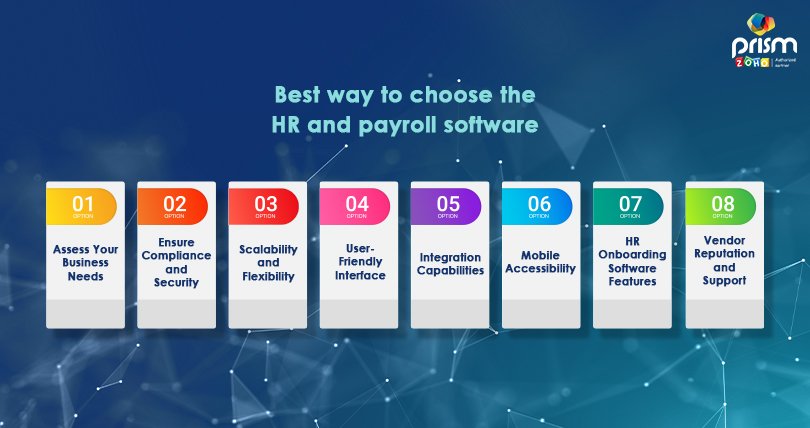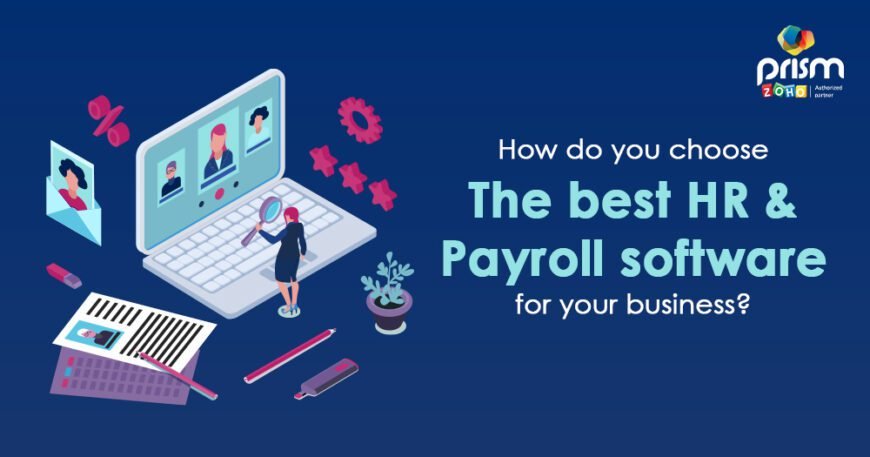How Do You Choose The Best HR and Payroll Software For Your Business?
Selecting the right Human Resources (HR) and payroll software is a critical decision for businesses aiming to streamline their operations and enhance efficiency. In the fast-paced and digitally-driven landscape of the 21st century, the role of HR and payroll systems goes beyond mere administrative tasks, encompassing strategic workforce management and compliance adherence.
In the quest for the best HR and payroll software, businesses are confronted with a myriad of options, each claiming to be the ideal solution. The selection process demands a careful evaluation of features, scalability, user-friendliness, and the software’s ability to adapt to the specific needs of the organization.
This article will delve into the intricate considerations businesses should weigh when choosing HR and payroll software. From assessing the software’s compatibility with existing systems to ensuring compliance with regulatory requirements, we will guide you through the essential criteria for making an informed decision. As businesses evolve, so do the demands on their HR and payroll functions, and the right software solution can be the linchpin in fostering growth, compliance, and overall operational excellence.
What are HR and Payroll Software?
HR (Human Resources) and Payroll Software are comprehensive solutions designed to streamline and automate various aspects of HR and payroll management within an organization. These software systems leverage technology to enhance efficiency, accuracy, and compliance in HR and payroll processes. Here are key features and functions typically found in HR and Payroll Software:
1. HR Management
- Employee Information Management: Maintain a centralized database of employee information, including personal details, contact information, work history, and performance records.
- Recruitment and Onboarding: Facilitate the recruitment process from job posting to candidate selection. Onboarding features help streamline the orientation and integration of new hires.
- Performance Management: Set and track employee performance goals, conduct performance reviews, and manage performance improvement plans.
2. Payroll Management
- Salary and Wage Processing: Automate the calculation of employee salaries, wages, bonuses, and deductions based on predefined rules and policies.
- Tax Deduction and Compliance: Ensure accurate and compliant tax calculations, deductions, and filings, adhering to local and national tax regulations.
- Payment Processing: Facilitate various payment methods, including direct deposit, checks, and electronic transfers.
How Do You Choose The Best HR and Payroll Software For Your Business?
In the ever-evolving landscape of business management, selecting the right Human Resources (HR) and payroll software is a critical decision that can significantly impact the efficiency and effectiveness of your organization.
1. Assess Your Business Needs
Before diving into the myriad options available, take the time to assess your business’s unique requirements. Identify the specific HR and payroll functions crucial for your operations, such as payroll processing, benefits administration, time and attendance tracking, and HR onboarding. Understanding your needs will guide you in selecting a solution that aligns with your business objectives.
2. Ensure Compliance and Security
Compliance with local and industry-specific regulations is non-negotiable in HR and payroll management. Look for software that incorporates robust compliance features, including tax regulations, labor laws, and data security measures. Security is paramount when handling sensitive employee information, so prioritize solutions with advanced encryption and secure data storage.
3. Scalability and Flexibility
Consider the scalability of the HR and payroll software. As your business grows, the software should seamlessly adapt to accommodate an expanding workforce and evolving requirements. Opt for a flexible solution that allows you to customize features and modules based on your organization’s changing needs.
4. User-Friendly Interface
An intuitive and user-friendly interface is crucial for widespread adoption within your organization. Ensure that the software’s design is accessible to all users, regardless of their technical expertise. Features such as drag-and-drop interfaces, easy navigation, and clear workflows contribute to a positive user experience.
5. Integration Capabilities
Efficient integration with existing systems is key for a seamless workflow. The chosen HR and payroll software should integrate with other essential business applications such as accounting software, timekeeping systems, and employee management tools. Integration enhances data accuracy and reduces manual data entry.

6. Mobile Accessibility
In an era of remote work and mobile connectivity, having HR and payroll software with mobile accessibility is essential. Employees should be able to access relevant information, submit requests, and complete HR onboarding processes from their mobile devices. This ensures flexibility and enhances employee engagement.
7. HR Onboarding Software Features
Given the growing importance of streamlined onboarding processes, prioritize HR and payroll software that includes dedicated onboarding features. This may include digital document signing, employee training modules, and automated onboarding workflows. A comprehensive onboarding solution contributes to a smoother transition for new hires.
8. Vendor Reputation and Support
Research the reputation of the software vendor. Read reviews, seek recommendations, and evaluate customer testimonials. A reputable vendor with a history of reliable support and regular updates is more likely to provide a stable and feature-rich solution. Assess the level of customer support and training options available.
9. Cost Considerations
While cost is a significant factor, it should not be the sole determinant in your decision-making process. Evaluate the overall value of the HR and payroll software in relation to your business needs. Consider factors such as the software’s scalability, the level of support provided, and potential long-term savings in time and resources.
10. Trial Period and Demos
Many software providers offer trial periods or demonstrations. Take advantage of these opportunities to test the functionality of the HR and payroll software in a real-world setting. Engage key stakeholders within your organization to gather feedback and ensure that the chosen solution meets their expectations.
Conclusion
Choosing the best HR and payroll software for your business is a strategic decision that can significantly impact your organization’s efficiency, compliance, and overall success. By considering factors such as business needs, compliance features, scalability, and HR onboarding software capabilities, you pave the way for streamlined processes and improved employee management. It’s not merely about selecting a tool; it’s about investing in a solution that aligns with your unique requirements and empowers your team.
As you navigate the complex landscape of HR and payroll software options, keep in mind the importance of user-friendly interfaces, mobile accessibility, and seamless integration capabilities. The right software should not only meet your current needs but also adapt to the evolving dynamics of your business.
In this quest for the ideal HR and payroll software, consider partnering with Prism CRM Solutions. Our expertise in providing cutting-edge solutions extends to HR onboarding software, ensuring a seamless and efficient onboarding process for your new hires. Prism CRM prioritizes user-friendly interfaces, robust security, and scalable solutions tailored to your business needs. Elevate your HR and payroll management with Prism CRM Solutions, where innovation meets reliability.
Make the informed choice that transforms the way you manage your human resources and payroll. Choose Prism CRM Solutions for a future-ready solution that propels your business forward.

